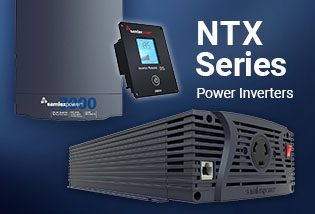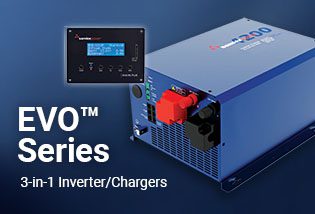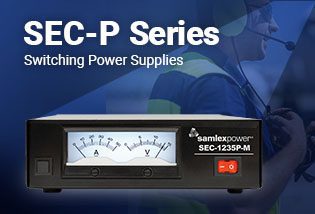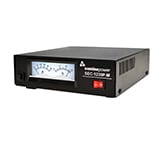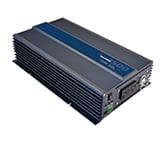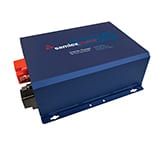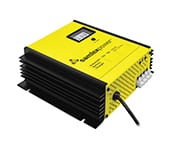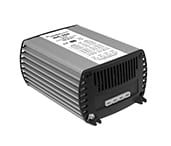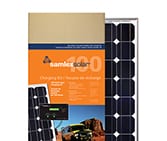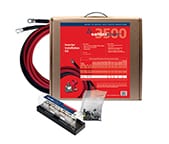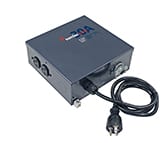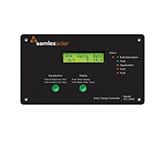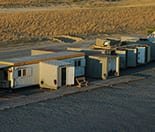Inverter Run-time Calculator
One of the most frequent questions that we get is how big an inverter do I need? It depends is usually how we start the answer – as it depends on what you are trying to power (load requirements) and the battery size (Volts). For instance, you might want to know whether you can run a space heater using a 12 Volt or 24 Volt battery through an inverter? If yes, how long can you keep the heater running using this battery system? What size inverter do you need to power this space heater along with my laptop, mobile phone, and an electric drill? To better answer such questions, Samlex created the following Inverter Run-time Calculator which allows you to visualize how the loads that you put on the battery interact with the inverter.
Additionally, as you add more devices to power using your desired battery system, the Samlex Inverter Run-time Calculator quickly does the calculations behind the scenes and produces an estimated total run-time based on your selected battery bank and load size. Once you have this information, our run-time calculator provides you with two inverter options that you may purchase to satisfy your power needs.
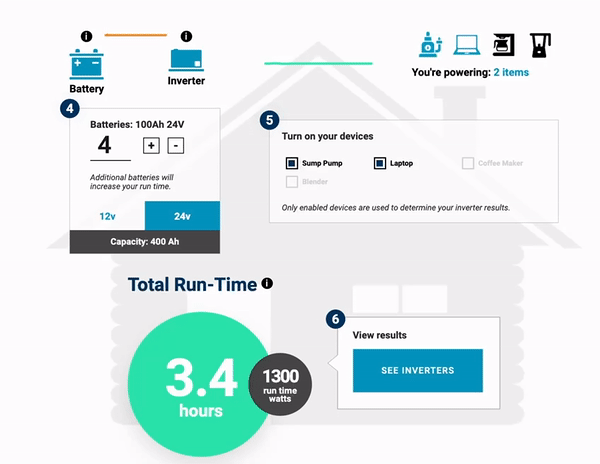
How Does the Samlex Inverter Run-time Calculator Work?
To estimate the total run-time, our calculator uses a simple formula. All batteries come with a predetermined amp-hours label or Ah written on them. If it is a 12 Volt battery system, all you do is multiply the usable Ah of your battery by 12 to find its watt-hours and then divide the watt-hours by the load’s required watts (or your power consumption rate) to calculate the total run-time. Similarly, you would need to plug in 24 in the same formula if you will be using a 24 Volt battery. While this seems straightforward, there are nuances that you need to be aware of.
Battery Ah * Battery Voltage = Battery Watt-hours
Battery Watt-hours/Power Usage in Watts = Run-time in Hours
To get to its suggestions, our inverter run-time calculator makes a few assumptions:
-
- Batteries are 100% charged to start and will only draw down to 50% (lead-acid batteries only). While lithium-ion batteries can be safely discharged up to 80% (or even higher) of their capacity, our calculator only uses 100 Ah lead-acid batteries in its calculations. We purposefully made this decision for the sake of easier calculations and visualization. Check out this post to learn more about the differences between Lithium-ion and lead-acid batteries: Pros and Cons of Using Lithium-ion Batteries
- Inverter efficiency of 90% – we add 10% to the wattage required for inverter sizing
- The minimum size of Inverter is determined by the combined watts of devices turned on and whether we set them to run on modified sine wave or pure sine wave
- A pure sine wave inverter is needed if powering both sensitive and non-sensitive devices
Inverter Run-time Calculator Demo
In the following video, Jonathan, our RV and Marine industry account manager, demonstrates how you can use our inverter run-time calculator.
Example: How Long Can a 12 Volt Lead-Acid Battery Run a Space Heater?
To figure out how long your 12 Volt lead-acid battery can supply power to run a space heater when grid power is not available you can use our easy-to-use inverter run-time calculator. Here are the steps you need to take:
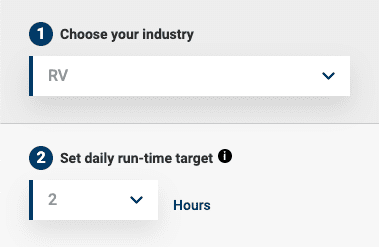
First, you choose the industry that is relevant to your application. From there, you can set a daily run-time target based on your specific needs, which is used in the final step of the calculation process as a visual indicator. The next step is to select all the devices that you want to power. As shown in the following photo, by hovering over each device’s information icon on the right side, you can see its minimum required wattage. This is the amount of power it needs to run consistently.
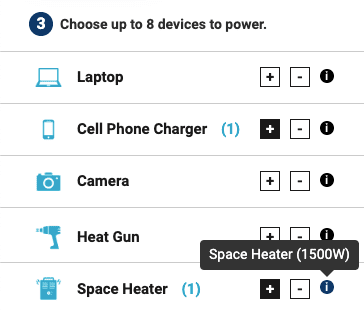
Once you have selected your loads, you need to input the number of batteries that are at your disposal. The more batteries you have, the more DC power will be available to run your devices. In this example, we have selected three 12 Volt batteries, which gives us 300 Ah. But, as mentioned before, depending on the battery type, the usable Ah will be different.
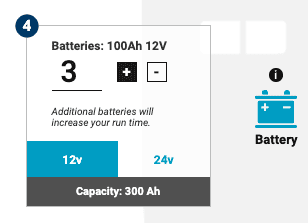
By default, all the devices that you selected in the 3rd step will be off. Since it’s unlikely you would be running all your devices simultaneously, you have the option to turn them on and off by clicking on each of their respective icons as shown below. As you turn on each device, the total run-time updates to reflect the changes that you have made.

Now that you have successfully finished these steps, the run-time calculator can determine how long your battery setup can keep delivering power to your selected devices. In this case, as you can see in the following image, with one 12 Volt battery, you can run a 1500 Watt space heater for 0.4 hours or 24 minutes. By adding three more batteries to this setup, you can run a 1500 Watt heater for approximately 1.4 hours or 84 minutes.
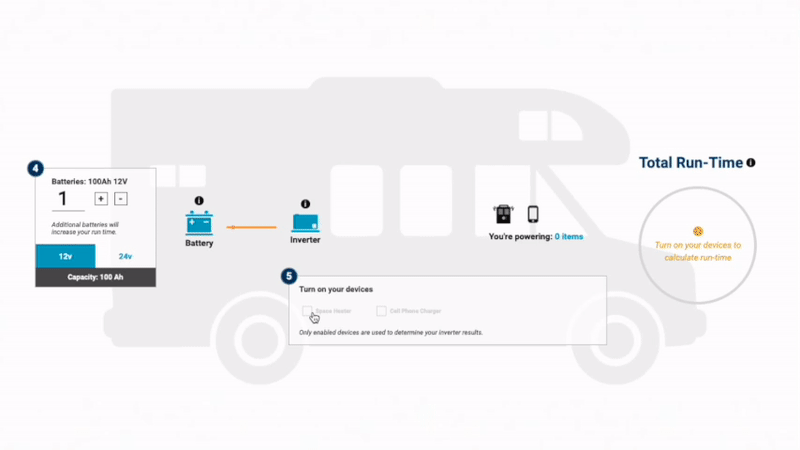
As shown above, the color of the total run-time calculator shifts from red to orange. This change in color is linked to the target run-time that you indicated in step 2 of the process. If your target run-time is higher than what the calculator estimates, it will turn red. And as you add more batteries to your setup, its color will change to reflect the changes that you have made. The indicator will turn green if you add enough batteries to support your power needs for the duration of your target run-time.
-
- Green Zone = More than 80% of the desired run-time achieved
- Orange Zone = 50%-80% of the desired run-time achieved
- Red Zone = Less than 50% of the desired run-time achieved
Right below the estimated total run-time, you have the option to view the right size inverters to get the job done.
How does the Inverter Calculator choose modified or pure sine wave?
If you will be using your DC-AC inverter to run sensitive electronic devices off-grid, our suggestion would be to go with a pure sine wave power inverter. If you select a mix of sensitive and non-sensitive electronics, the inverter calculator will automatically recommend a pure sine wave inverter to prevent damage or efficiency loss to your sensitive devices. To learn more about the differences between a pure sine inverter and a modified sine power inverter check out this blog post: Modified Vs. Pure Sine Wave Power Inverters [Purchasing Guide]
It is also worth mentioning that we have added a surge factor based on your selected loads to suggest the inverter size accordingly, but this surge factor is not used to calculate the run-time since power consumed by a surge becomes negligible over a longer duration of use.
Feel free to give us a call if you are in the process of designing your dream power system to run your electronic devices using DC power. Our expert sales team is available 8 am to 4 pm PST to answer any questions you might have regarding how to pick the best inverter for your specific power needs.


